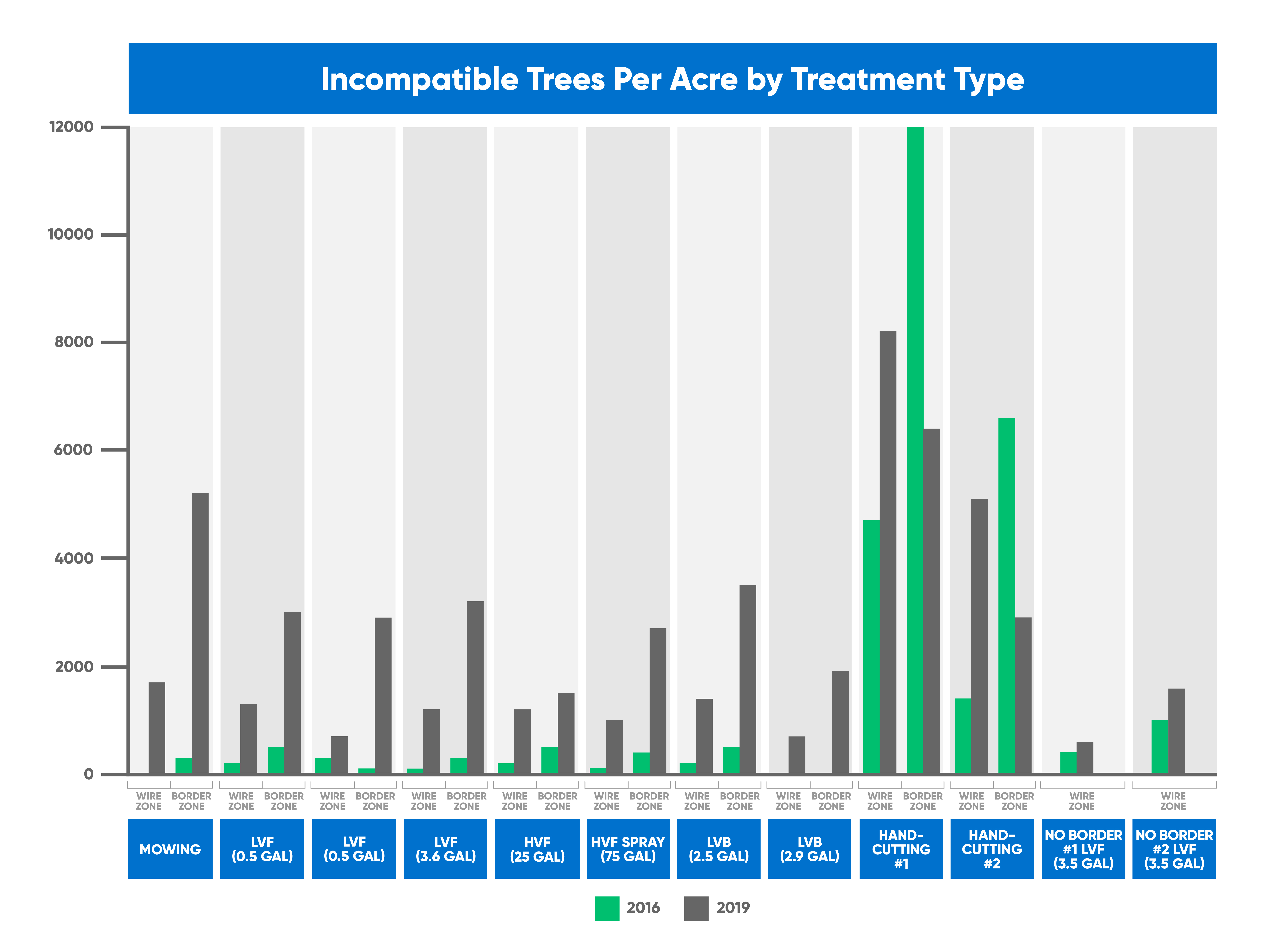The State Game Lands 33 (SGL 33) research project in central Pennsylvania is the longest continuous study of vegetation management practices and their environmental impact throughout utility rights-of-way (ROW). Since the early 1950s, SGL 33 researchers have tested vegetation control methods and their effects on natural resources, including plant communities and various wildlife groups. As a result of this research, utility vegetation managers have access to valuable insights that can help them support not only electrical transmission reliability, but also environmental sustainability.
Supported by decades of continuous research, SGL 33 continues to establish best management principles for vegetation managers working throughout utility ROW. According to Dr. Carolyn Mahan, professor of biology and environmental studies at Pennsylvania State University (PSU) and principal investigator for SGL 33, these principles include Integrated Vegetation Management (IVM) strategies that feature selective herbicide applications.
“Integrated Vegetation Management is, in my opinion, the best way to manage a right-of-way,” Mahan said. “That includes the selective use of herbicides to remove incompatible species.”
This concept was most recently supported by a report detailing results from the latest three-year research cycle conducted by SGL 33 contributors. As incompatible trees and woody plant species pose a threat to interfere with overhead transmission lines, a number of different vegetation control strategies were tested on SGL 33 plots to help researchers identify best practices for the establishment of tree-resistant cover types. Supporting the development of these low-growing plant communities can help vegetation managers create a natural barrier against the reestablishment of incompatible plant species, which significantly reduces vegetation-related threats to utility infrastructure.
A total of five different control methods were applied to SGL 33 field plots in 2016 to support this analysis. In addition to hand-cutting and mechanical mowing, three different herbicide-based control methods were tested:
- High-volume foliar
- Low-volume foliar
- Low-volume basal
Each of these strategies was managed to include plots up to 3 acres in size, as well as a 95-foot wire zone and 30-foot border zone on each side of the transmission line corridor. When results from each plot were measured in July 2019, SGL 33 data showed that low-volume and high-volume foliar applications generally led to lower incompatible stem densities in the wire zone and border zone than plots managed with mowing or hand-cutting practices.

Incompatible trees (>1 foot tall) per acre based on treatment types tested through field plots associated with SGL 33 research (2021 Floral and Faunal Research Report).
Low-volume basal applications also resulted in lower stem counts. In fact, no incompatible trees were recorded in the wire zone of one of the plots treated with a low-volume basal application in 2016. That plot, along with a secondary low-volume basal plot, yielded stem counts lower than sites treated with mechanical control methods.
Benefits of Herbicide Applications
As indicated by these results, using herbicide applications as part of an IVM-based program can significantly enhance stem density management throughout utility ROW corridors. As a result of applying these practices throughout their managed land, vegetation managers can achieve the following benefits:
- Enhanced electrical transmission reliability
- Development of herbaceous-dominated communities throughout the wire zone
- Establishment of low-growing tree saplings in the border zone
- Biodiverse habitat development for native wildlife species
“Selective herbicide applications are best at achieving two objectives: keeping trees clear of power lines and simultaneously providing habitat for native wildlife,” Mahan said. “We’ve found that any selective herbicide treatment featuring backpack sprayer applications works best to achieve both.”
As SGL 33 researchers prepare for the next few years of environmental research throughout utility rights-of-way in central Pennsylvania, the latest findings from the long-standing studies provide ample support for utility vegetation managers working to simultaneously protect utility infrastructure and surrounding wildlife. Results and key takeaways from the project’s most recent three-year research cycle can be found within the complete 2021 Floral and Faunal Research Report developed by PSU.
Corteva Agriscience, a funding partner of SGL 33 research, also launched a digital platform to share SGL 33 updates and industry success stories regarding the application of IVM practices throughout utility ROW. For direct access to this educational resource, visit HabitatWithHerbicides.com.
™ ® Trademarks of Corteva Agriscience and its affiliated companies. © 2022 Corteva.

 Incompatible trees (>1 foot tall) per acre based on treatment types tested through field plots associated with SGL 33 research (2021 Floral and Faunal Research Report).
Incompatible trees (>1 foot tall) per acre based on treatment types tested through field plots associated with SGL 33 research (2021 Floral and Faunal Research Report).